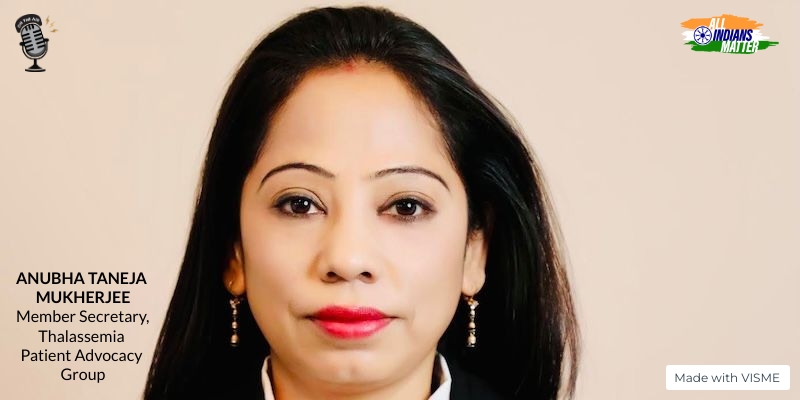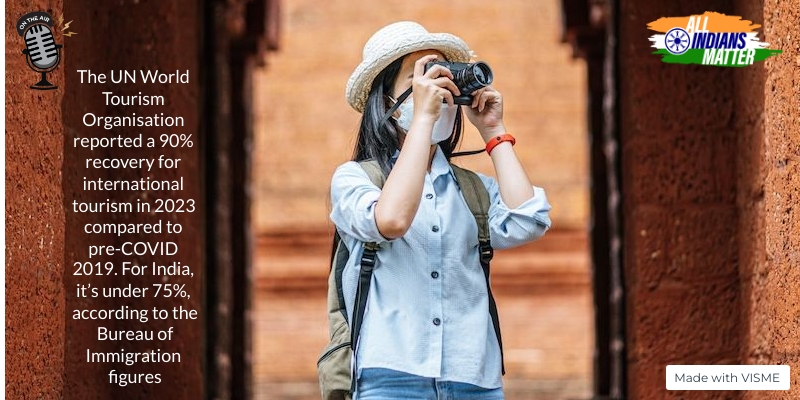Ashraf Engineer
April 9, 2022
EPISODE TRANSCRIPT
Hello and welcome to All Indians Matter. I am Ashraf Engineer.
For most of us, turning on the tap and filling a cup or vessel with water is something we take for granted. But for millions and millions of Indians, that’s a luxury and quite out of reach. They are dependent on water bodies or wells, often having to trek long distances to fetch merely a couple of pots. It’s particularly hard on women who are expected to collect water for their families but have very little say in how this precious resource is managed. According to a National Commission for Women report, they walk up to 2.5 km to fetch potable water in rural areas and that costs the country the equivalent of 150 million women days each year. In rupee terms, that’s a staggering Rs 1,000 crore.
SIGNATURE TUNE
According to 2017 Central Ground Water Board data, 256 districts have alarmingly low groundwater levels. And it’s going to get worse. It means that rural households, most of which do not have access to piped and hygienic water, will get even more dependent on unclean water. Don’t forget, India has 17% of the world’s population, but only 4% of its freshwater.
Like I said earlier, it’s the women that bear the brunt of it. In rural India, they spend three to four hours a day fetching drinking water, time which could have been utilised for productive economic activities. It also leads to social imbalances like lower literacy levels for women since many girls leave school to help with water collection. It is among the major factors that prevents women from realising their true potential and empowering themselves economically.
In urban areas, women do not walk long distances but they do lose hours standing in queues to collect water from taps or water tankers.
This water stress means India has become the world’s largest extractor of groundwater, accounting for 25% of the total. That is because 70% of our water sources are contaminated. This makes women even more vulnerable than before because it places on them an even greater burden of accessing water. This burden is compounded by the indignity and insecurity of having to defecate in the open.
Indian women are at high risk due to their daily contact with unsanitary water. For example, trachoma, a disease that can cause blindness, is transmitted through contaminated water where women gather. Women and girls collecting water are also susceptible to diarrhoea, hepatitis A and leptospirosis.
In fact, the water stress and the collection of water being thought of as a woman’s responsibility has led to at least one drought-prone village in Maharashtra witnessing high levels of polygamy. Men marry more than once just so there are enough woman to fetch the water the household needs. These women are called ‘water wives’ and the village I’m referring to is called Denganmal. Global warming has led to the depletion of traditional water sources and the men have had to shift from agriculture to labour in distant locations.
Marrying for water has become institutionalised here, with the ‘water wife’ usually being a widow or an unmarried woman whose family cannot cough up the dowry demanded by potential grooms. As water wives, they gain social acceptance and the household chores are split among them. Essentially, the women are substitutes for water pipes or tankers. It’s shocking, it’s regressive and heart-wrenching.
If we are to attain gender equity, addressing women’s water, sanitation and hygiene requirements should be the first priority. Governmental policies should view the crisis from a gender lens and gender roles around water need to end.
At an economic level, water scarcity has been consistently considered among the top risks by business leaders. According to the United Nations, more than two billion people across the world are experiencing high water stress and India has 88 million of them. This puts India right at the centre of this global problem.
About 80% of India’s freshwater is used for agriculture, so you can see how it’s central to farmers’ livelihoods and our food security. As the weather changes and food demand rises, more and more groundwater is extracted and now its levels are worryingly low.
Women make up 37% of the agriculture workforce and, as I pointed out earlier, with the men migrating to find labour jobs, it’s the women who are managing the fields and the homes. Nobody has a greater stake in India’s water security than them.
And they engage with water in various ways – as farmers, of course, but also as panchayat members, Mahatma Gandhi National Rural Employment Guarantee Scheme workers, etc. This means that they understand the issue better and they should be in the driver’s seat of water management programmes.
When they do receive support, they deliver results. For instance, in Jharkhand’s East Singhbhum district, women groups manage 450 water pumps and meet the needs of 130 villages through a UNICEF initiative. In West Bengal, women pressured the government to release MNREGA funds for water supply infrastructure that created water potential of 7.4 billion litres and benefited 35,000 women. In Gujarat, when women were included in decision-making, there was a marked improvement in the impact of water projects.
As you can tell, women have consistently been able to do better than their male counterparts in such programmes.
They are invested in the issue already, so this is the time to hand over leadership of India’s water efforts to them.
The deck is stacked against Indian women, especially in rural areas. Water is among the most pressing challenges they deal with. At stake is their own health, their economic empowerment, their education and their future. By extension, so is that of the entire nation.
Thank you all for listening. Please visit allindiansmatter.in for more columns and audio podcasts. You can follow me on Twitter at @AshrafEngineer and @AllIndiansCount. Search for the All Indians Matter page on Facebook. On Instagram, the handle is @AllIndiansMatter. Email me at editor@www.allindiansmatter.in. Catch you again soon.






